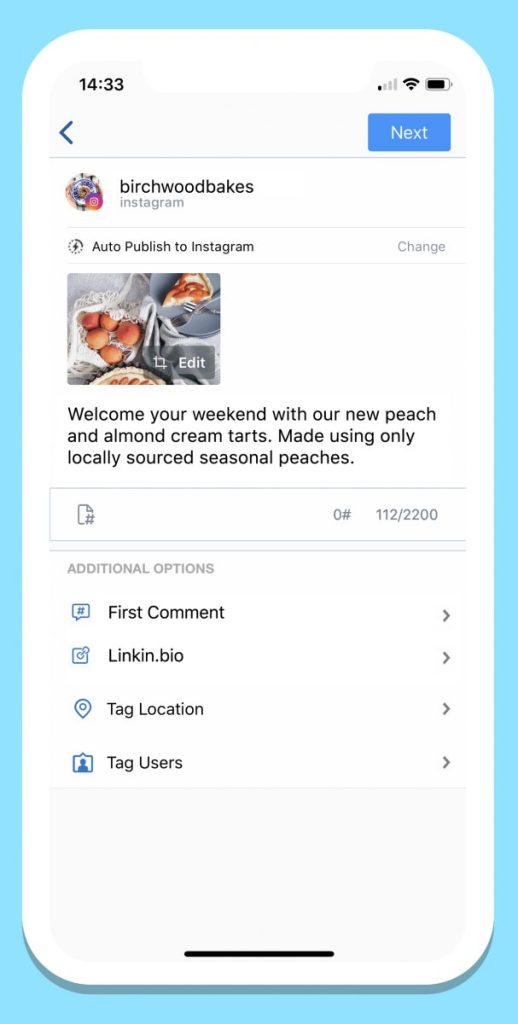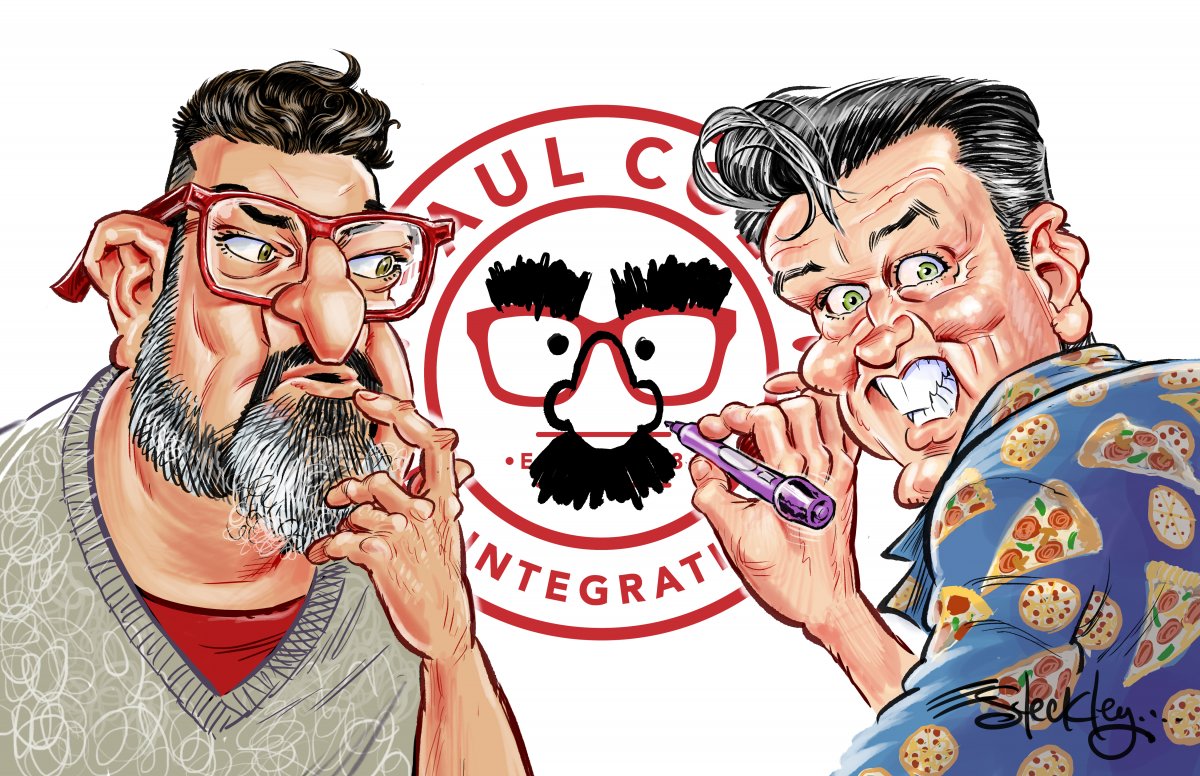[vc_row][vc_column][vc_column_text]When Matt Smith entered a hackathon with a few friends, he never could have guessed that their winning idea would grow into the world’s leading Instagram marketing platform used by four million people: Later.
Back in 2013, Ian MacKinnon (a co-founder of Later) asked Smith to join him at Vancouver’s AngelHack. After going through a long list of MacKinnon’s wildest ideas, they settled on a plan to create a way to send push notifications to your phone to simplify the Instagram posting process. After one of Smith’s friends in the fashion industry told him that her company was using a 20 person text chain to decide when and how to post on Instagram, he knew they had a solid idea.
“I wasn’t thinking of starting a company at the time at all. I was just like, ‘Oh, we’ll build this thing, share it with a few friends and then maybe we’ll be able to sell it to Hootsuite or something,’” said Smith. “Sure enough, we won the hackathon and a few months later we had about 20,000 people sign up for the beta.”
Word of the platform (then called Latergramme) quickly spread, and before they knew it, Silicon Valley came knocking. The app was found by investors who saw Later’s success in the app store by using AI technology. Smith and his Later co-founders (MacKinnon, Roger Patterson and Cindy C. Chen) were lucky enough to skip the process of seeking out people to raise money, as people were eager to invest.
Smith, an entrepreneur at heart, was already busy as a co-founder at Thinkific when Later began to pick up speed. Like many who came before him, there came a point where he had to choose which project to go all in on. He chose Later—though he thought it would only last for six months. Now, six years later (no pun intended), he remains as COO of the company.
Over time, Latergramme evolved into Later, and the platform branched out to include other social media, like Facebook, Twitter, Pinterest and recently TikTok. It’s used across all industries from small businesses to large corporations (like The Wall Street Journal and The Economist) alike.
For its success, Later landed on Deloitte’s Fast 50 list for 2020. However, for Smith, the greatest accomplishment is getting to help other businesses reach their own goals.
“We have a lot of small, medium sized companies who use Later and it’s just amazing to kind of be part of their journey and get to help them build and follow their passion,” said Smith. “When you’re hearing about and seeing that happen, hundreds of thousands times over, I think that’s what makes me really excited.”
For this week’s Entrepreneur of the Week, Bay Street Bull spoke with Matt Smith, Co-Founder and COO of Later, about using lessons from your past to accelerate your future and how an idea from a hackathon became a tool for helping businesses thrive around the world.[/vc_column_text][vc_text_separator title=”Q&A” color=”custom” style=”double” border_width=”2″ accent_color=”#5dd6f7″][vc_column_text]

As Instagram grows, you guys obviously have to grow as well, because the app is always changing functions. How has Latergramme evolved over the years, eventually into Later?
Any startup has some pretty key partnerships to be successful. One, obviously our relationship with Instagram is important. You’re moving at their pace a lot of the time and there’s a lot of benefits with that—we rode the Instagram wave for a very long time and we still are. Whatever they do to help grow, helps us. So, it’s kind of a mutually beneficial relationship.
Originally, we’d send a push notification to your phone from a website we had—you’d upload the photos and then would just send a push. There was no way to automatically post on Instagram. So, that was the original “hack” that we built. After much deliberation on the Instagram side, they eventually decided to open up an API like most other social media platforms, which basically allows automatic posting. And so, we were one of the first people with that as an Instagram partner. That allowed us to make our platform a lot easier to use. At the same time, I think we kind of made a shift in the business a bit and started to kind of expand out. So, we started expanding to other social media platforms as well.
We realized that it’s a really important thing to not have all our eggs in the Instagram basket, so now we do Pinterest, Twitter, Facebook and we just launched TikTok. We’ll be adding more and more and more as we go on. It’s also one of the main reasons why we moved from Latergramme to Later. With Latergramme—“gram”—was obviously Instagram related. So, along the way, we worked on re-branding. Eventually, after a month of trying to come up with names, one day, my wife said, “Why don’t you just call it later?” And I was like, “That works!”
There was a lot of pushback initially because it [Later] was already, simply a word. But, we did this Survivor-style vote, where everyone would go into a room and record their opinion and put their vote in a little cup then leave the room. There were probably about 15 of us and the vote was split almost 50/50 between Later and Checkerboard or something. So, we could have been called Checkerboard.
Was there any major learning curve or hurdle that you guys had to face to get to where you are today? Or is everyday a rollercoaster of learning?
Later wasn’t my first start-up, and as you build one start-up to the next, I’ve realized a lot of similar challenges along the way. I think we [Later] moved really, really quickly early on because we kind of knew all the things to avoid. We make less mistakes—we still make some—but way less the second time around, third time around so and so forth. There’s not as much learning on the job in a way.
Major obstacles? I think every year you’re going to have to reinvent your strategy, especially for growth. That’s one of the things that I think we’ve done an exceptional job of. And that results in the Fast 50 and stuff. It feels good to kind of get that out of there. We don’t talk too much about what we’re doing, for the most part we [Later] have kept to ourselves, been heads down focused, and built a great company. Now, I think it’s worthwhile to kind of get out there and start sharing the news.
As someone who has experience with multiple startups, is there a point where you kind of feel like,”‘Oh, this company is successful now. We’ve made it.”?
Like, this company has been kind of successful enough that it’s not going to fail?
Yeah.
I think early on for Later, that was really clear to me. Before we even went full time, we were making $20,000 a month. At that point, you kind of have enough validation in the company: we’re growing, we have a lot of traction in a big market, we’re making money, people are willing to pay for what we’ve built and, and we have a great team to back that up and grow it. Once you kind of get to that point, it’s very hard to not be a great company. It’s just like, “How big will the company be?”
I think for Later that was probably before any of us went full-time for the most part. When we started raising our first round, that was already the case. It was like, “We’re there now. It’s just a matter of hunkering down and building this thing.” At that point it’s more like a team problem: Are you able to get everyone motivated and get on the same page and focus on that goal?
With Thinkific, we had a sort of longer journey. It took us a couple of years or so to really test out and validate what we built. We didn’t have to do that as much as Later, people started using the first thing we built. When I decided to go to Later, I told Greg, my brother, “I’ll be back in six months.” I had no idea that I’d still be here five or six years later.


I think the way I’ve been framing that more and more is by looking at the number of people we help. We have a lot of small, medium sized companies who use Later and it’s just amazing to kind of be part of their journey and get to help them build and follow their passion. When you’re hearing about and seeing that happen, hundreds of thousands times over, I think that’s what makes me really excited.
And what’s the best piece of advice you’ve been told throughout your entrepreneurial journey?
Uh, don’t F it up. [laughs] I’ve been told a bunch of different things, but I’m also not that good at listening to advice. So, I don’t know.
One thing that I heard recently was that as you grow and become more of a leader in the company, your goal is not so much about the productivity of yourself, but more so about the productivity and effectiveness as a team. It’s a real mind shift for a lot of leaders, especially start-up founders. They go from a place of like, do, do, do, do, do themselves. Then, somewhere along the way you kind of shift over to the fact that you’re not “doing” anymore, right? You’re laying out and being clear about what the direction of the company is, and then you’re communicating that to the rest of the team. You’re making sure that they have the right resources and are trained and motivated to make sure that they’re happy in life.
I think team building is one of the great rewards of building a company. Your job now is to make a productive team—it doesn’t matter how productive you are yourself—you need the team to be productive. It takes a while, but I think that’s something I’ve heard from a lot of other founders as well. It’s probably sinking in more and more now, every day.
Along the same lines, if you were to look back at yourself, whether it be with Thinkific or with Later, would you give any advice to your younger self?
What I would probably say, and I think this is relevant to a lot of companies, is, acknowledge that this is what you will be doing for the next five to 10 years of your life and be happy with that.
I’m not saying I’m not happy, but starting a business is a big commitment. Initially that wasn’t very clear to me, I thought Later would be a very short term. But, building a company is always a long, long journey. So, you have to be excited about what you’re doing. That’s kind of what I was talking about with small and medium size businesses and helping people work at their passions in life. We get to actually help them grow and build the economy, not just Nike or something, but people actually building what they love. So, I think you have to get excited about what you’re doing day to day. Long-term outcomes are going to come, but it’s a very long road.
Is there any certain company using Later that when you saw they were a customer you were like, “Whoa!”
Luckily, I feel like there’s been a lot of those. Maybe Doctors Without Borders? I guess the overall touch of every single industry with every type of consumer brand is really cool. NBC news uses us and the Tonight Show with Jimmy Fallon!
I had this interesting moment when I went to Japan that I think was kind of cool—I was kind of mind blown. It was like, “Well when you’ve made it in Japan, you’ve really made it.” Last November we met up with an agency and they took us out for dinner and drinks, and as we were walking around Tokyo, they were pointing to all of the big signs like, “This is a Later customer, this is a Later customer.” And I was like, “I don’t even know these brands, but it’s absolutely crazy that they’re all using our platform.” I think that moment was like, “Oh wow. We built something really impressive.” So, that was fun.[/vc_column_text][vc_separator color=”custom” border_width=”2″ accent_color=”#5dd6f7″][/vc_column][/vc_row]













